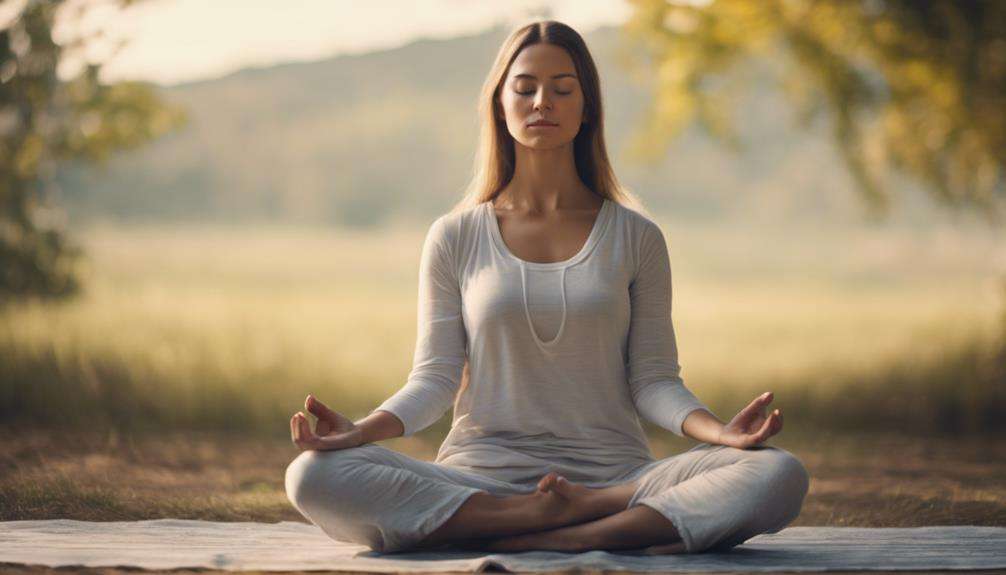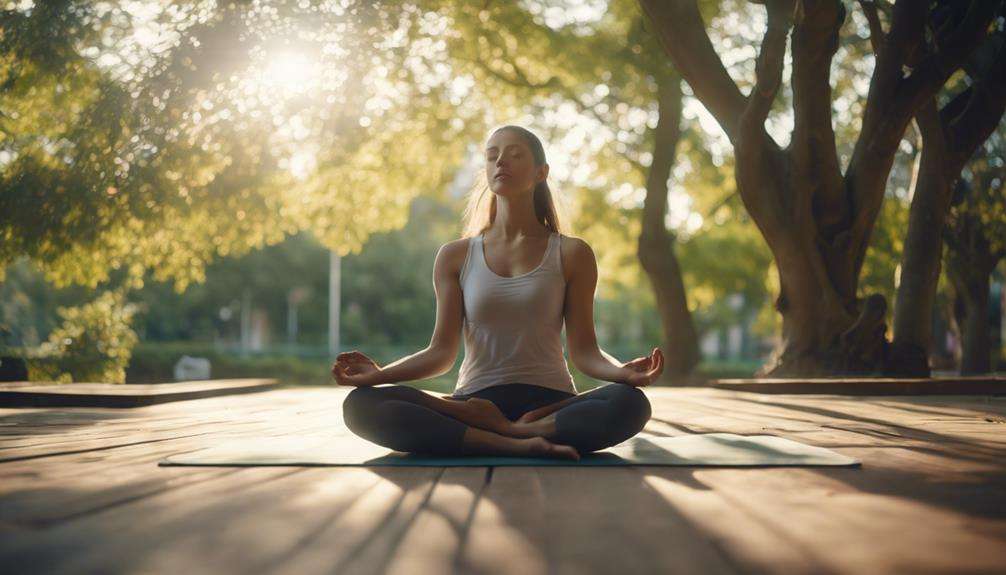Practicing gratitude and happiness through yoga isn't just a mere trend; it's a powerful tool that can transform your outlook on life and well-being.
Imagine a practice that not only strengthens your body but also nourishes your soul. By exploring the intersection of gratitude and yoga, you can unlock a profound connection that goes beyond physical postures.
Stay tuned to discover how this unique blend of mindfulness and movement can elevate your daily existence to new heights.
Key Takeaways
- Yoga enhances gratitude and happiness through mindfulness and positive emotions.
- Practicing yoga fosters a sense of appreciation and joy in daily life.
- Mindfulness in yoga promotes emotional well-being and a thankful heart.
- Regular yoga practice can lead to long-term improvements in emotional health and happiness.
The Link Between Yoga and Gratitude
Discover how practicing yoga can cultivate a profound sense of gratitude in your daily life. Gratitude is a powerful practice that helps us focus on the positive aspects of our lives, fostering feelings of appreciation and joy.
Through yoga, we can tap into this gratitude by being mindful of our breath, movements, and surroundings. The practice of gratitude in yoga not only enhances our emotional well-being but also strengthens our social connections and overall happiness.
How Yoga Enhances Happiness
Yoga enhances happiness by stimulating the release of endorphins, the body's natural feel-good chemicals, which contribute to a sense of well-being and contentment. When you practice yoga, you aren't just moving your body; you're also influencing your emotions positively. The physical activity involved in yoga triggers the release of endorphins, reducing stress hormones and promoting a state of inner peace. By incorporating mindful breathing techniques, yoga helps regulate your emotions, allowing you to experience greater joy and gratitude in your daily life.
Certain yoga poses, such as backbends and inversions, can also play a significant role in enhancing happiness. These poses stimulate your nervous system, uplifting your mood and fostering overall well-being. Moreover, the mind-body connection that yoga cultivates fosters self-awareness, self-acceptance, and a positive perspective on life. Through yoga, you can learn to express gratitude more readily, embrace joy, and live a happier, more fulfilling life.
Cultivating Gratitude on the Yoga Mat
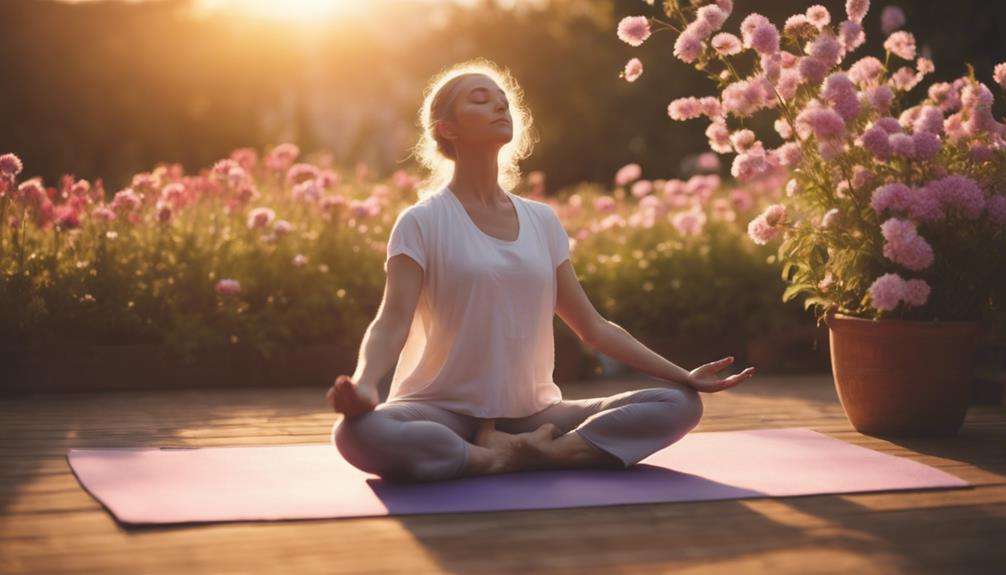
Cultivating gratitude on the yoga mat enhances your mindfulness and focus, elevating your practice to a deeper level of connection with yourself and the present moment.
When you practice gratitude during yoga, you allow yourself to fully appreciate the movements, breath, and sensations in your body.
This practice of gratitude helps you feel good both physically and mentally.
Yoga Poses for Boosting Happiness
Enhance your overall happiness and well-being through specific yoga poses that boost mood and promote a sense of joy and positivity.
Practicing yoga poses like backbends, inversions, and heart openers can make you feel happier by releasing endorphins and improving your mood. Poses such as Camel Pose, Wheel Pose, and Headstand stimulate your nervous system, fostering feelings of joy and positivity within you.
When you engage in Sun Salutations, also known as Surya Namaskar, you can increase your energy levels, uplift your spirits, and enhance your overall well-being.
Balancing poses like Tree Pose and Warrior III not only help calm your mind and improve focus but also create a sense of inner peace and happiness.
Additionally, incorporating restorative poses like Child's Pose and Savasana can reduce stress, promote relaxation, and cultivate a deep sense of contentment and happiness within you.
Get on your mat and let these poses be your pathway to a brighter, more joyful you.
Mindfulness Practices for Gratitude
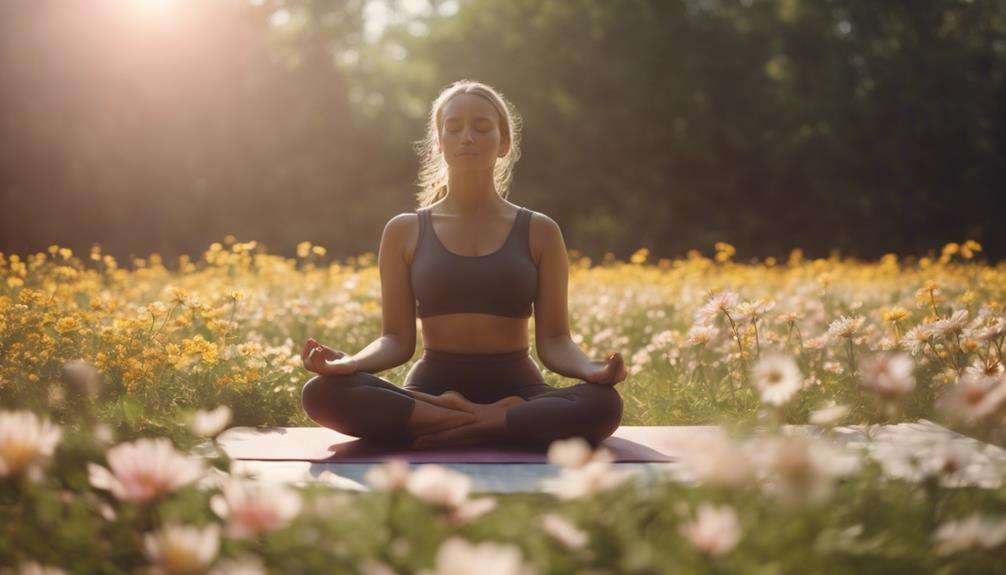
Embrace the power of mindfulness in your yoga practice to enhance gratitude in your daily life. By focusing on the present moment and acknowledging positive emotions, you can cultivate a sense of thankfulness.
Incorporate techniques like deep breathing and gratitude journaling to boost your mental clarity, emotional balance, and overall happiness.
Benefits of Mindfulness
Boost your gratitude and happiness by embracing mindfulness practices in yoga to enhance your present moment awareness and overall well-being.
Mindfulness practices in yoga help you cultivate gratitude by focusing on the present moment, fostering emotional regulation and brain function. Research indicates that mindfulness enhances overall well-being, allowing you to appreciate experiences with gratitude.
Techniques like body scans and mindful breathing deepen your connection to yourself and your surroundings, leading to a profound sense of gratitude. By incorporating mindfulness into your yoga practice, you can reduce stress, improve mental clarity, and increase happiness.
Embrace mindfulness practices to bring a sense of gratitude into your daily life, fostering a positive outlook and a deeper appreciation for the world around you.
Cultivating Thankfulness Daily
Cultivate a daily practice of thankfulness through mindfulness in yoga to nurture gratitude and happiness in your life. Here are three ways gratitude makes a difference in your yoga practice:
- Mindfulness in yoga: By focusing on the present moment during your yoga practice, you become more aware of the blessings around you, leading to a profound sense of gratitude.
- Promoting positive emotions: Incorporating gratitude into your yoga routine enhances happiness by triggering positive emotions, making us feel grateful for the simple joys in life.
- Reducing stress levels: Daily thankfulness through yoga helps in reducing stress by fostering inner peace and contentment, ultimately contributing to your overall well-being.
Embrace gratitude in your yoga practice to cultivate a joyful and thankful heart.
Gratitude Journaling Techniques
To deepen your practice of gratitude and mindfulness in yoga, consider incorporating effective gratitude journaling techniques. Gratitude journaling involves writing down daily blessings and thankful moments to enhance mindfulness.
Research shows that this practice reduces stress, improves mood, and boosts overall well-being. By keeping a gratitude journal, you can increase self-awareness, promote positive thinking, and enhance emotional resilience.
Reflecting on positive experiences in your journal can help cultivate happiness and contentment. These techniques will help you focus on the present moment, appreciate small joys, and develop a profound sense of gratitude for life's gifts.
Embrace the power of gratitude journaling to enhance your yoga practice and foster emotional well-being.
Yoga's Impact on Mental Wellbeing
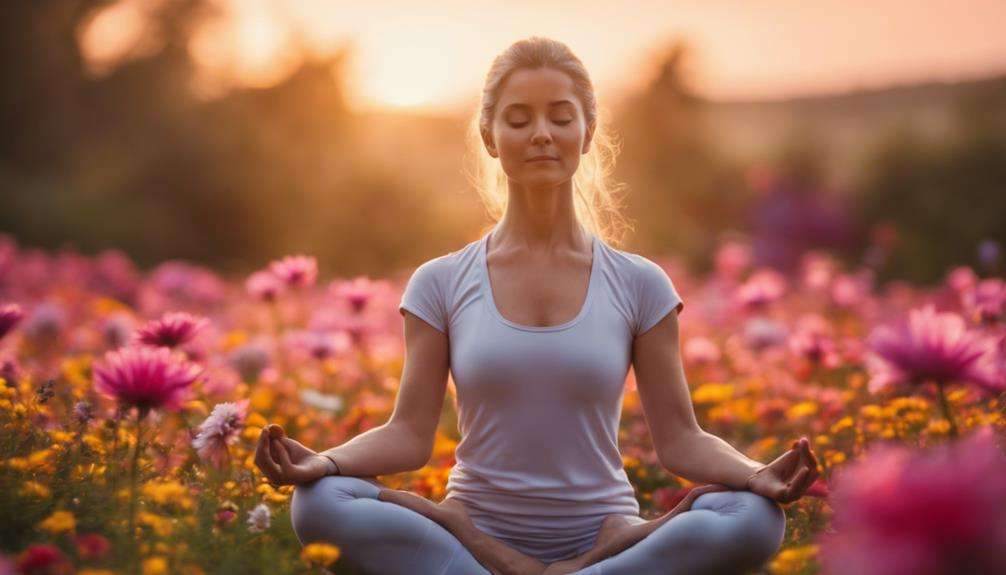
Regularly practicing yoga supports your mental well-being by reducing symptoms of anxiety and depression and enhancing emotional regulation and clarity. Here are three ways yoga impacts your mental well-being:
- Reduction of Anxiety and Depression: Studies have shown that engaging in yoga can significantly decrease feelings of anxiety and depression, providing a sense of calm and inner peace.
- Increase in GABA Levels: Yoga helps boost levels of GABA, a neurotransmitter that plays a crucial role in mood regulation and stress reduction, leading to a more stable and positive mental state.
- Enhancement of Emotional Regulation: By promoting mindfulness and self-awareness, yoga equips you with the tools to manage negative thought patterns, cultivate resilience, and foster a positive mindset, enabling you to navigate life's challenges with greater ease and clarity.
Incorporating yoga into your routine can be a powerful ally in your journey towards improved mental well-being, offering a holistic approach to nurturing your mind, body, and spirit.
Frequently Asked Questions
Why Is Gratitude Yoga Important?
Gratitude yoga is important because it strengthens the mind-body connection, fosters a positive mindset, boosts emotional well-being, and serves as a vital self-care practice. Embrace gratitude in yoga for holistic wellness and happiness.
How Does Practicing Gratitude Make You Happier?
Practicing gratitude makes you happier by fostering a positive mindset, enhancing emotional well-being, boosting mental health, and nurturing inner peace. Embracing gratitude in your daily life can lead to a more fulfilling and joyful existence.
Why Is It Important to Be Grateful and Practice Gratitude?
Being grateful and practicing gratitude is vital for a positive mindset. It brings health benefits, increased resilience, and improved relationships. Embracing gratitude in your life opens doors to joy, contentment, and a deeper connection with the world.
Why Is It Important to Practice the Virtue of Gratitude?
Embracing gratitude in yoga fosters a grateful heart, promoting emotional well-being and building resilience. Through mindful reflection and appreciation practice, you cultivate a positive mindset, inner peace, and a thankful attitude that enriches your life.
Conclusion
In conclusion, practicing gratitude and happiness through yoga is a powerful way to cultivate contentment and joy in your life.
By linking yoga with gratitude, you can enhance your mental wellbeing, boost happiness, and promote overall wellness.
So, roll out your mat, strike a pose, and embrace the transformative power of gratitude on your journey to inner peace and positivity.
Let yoga be your path to peace, positivity, and prosperity!


